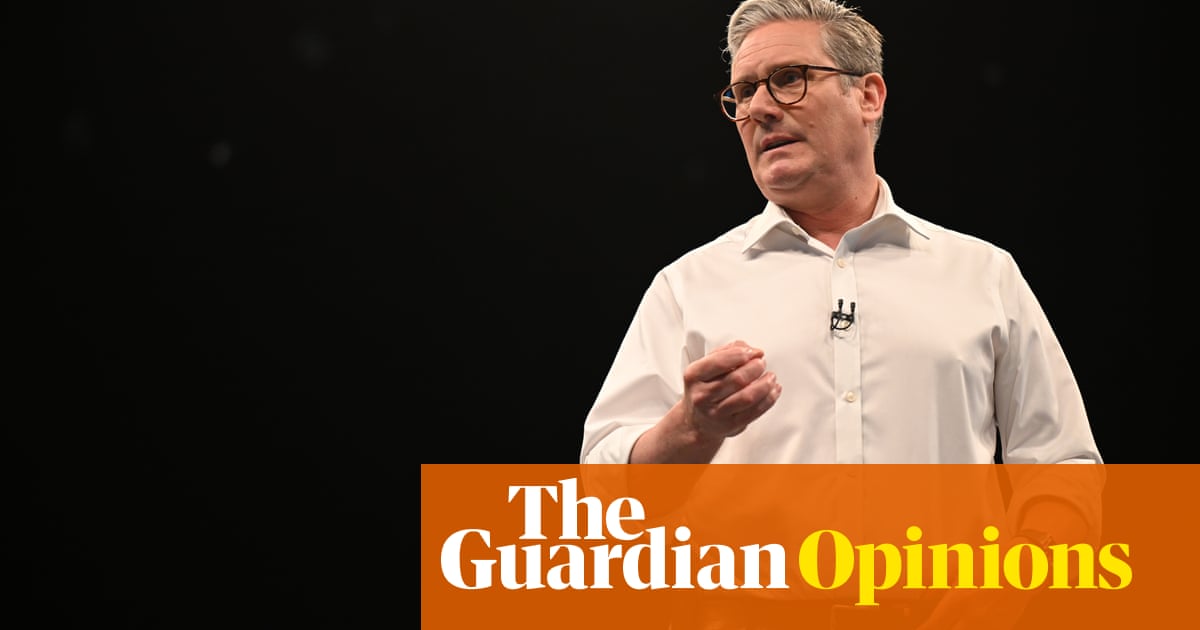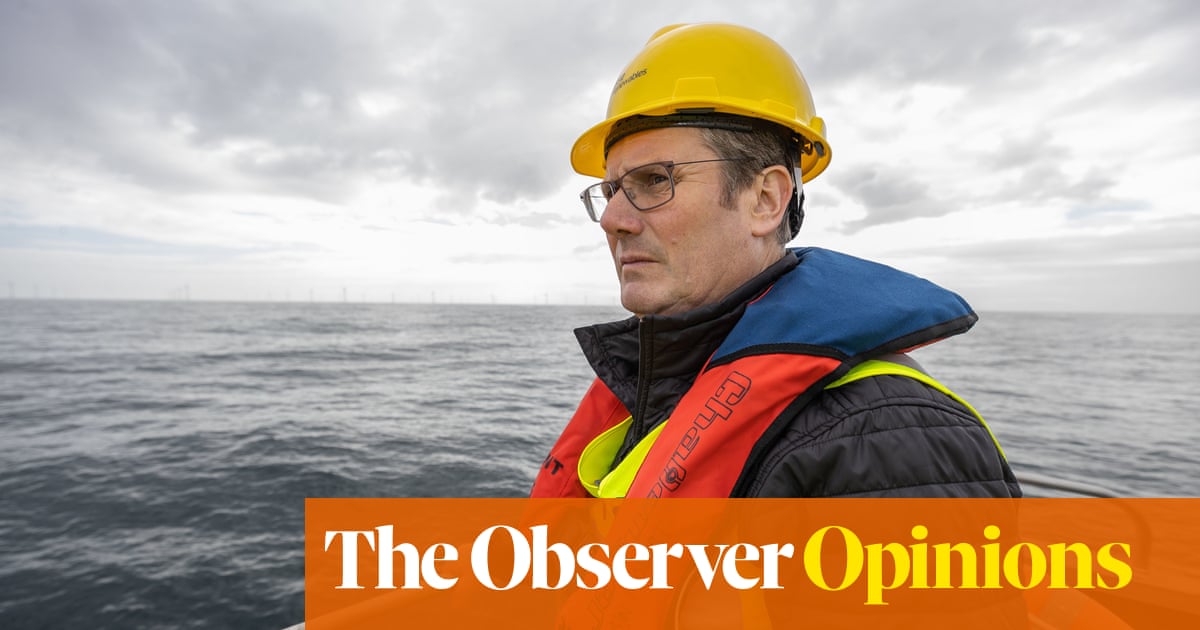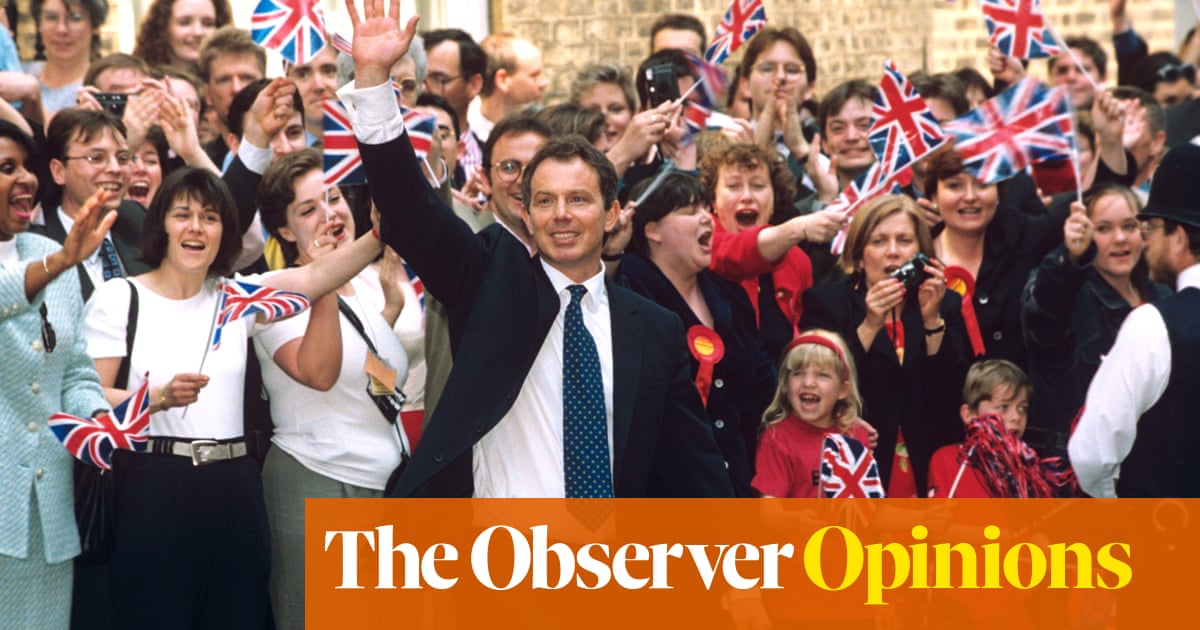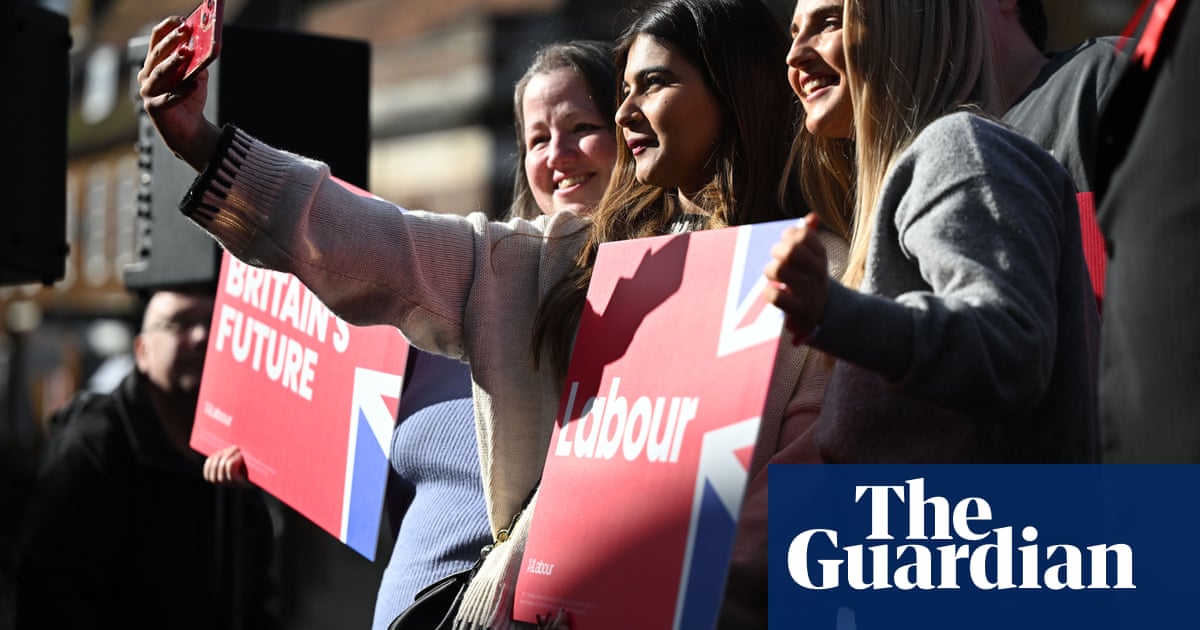
No one should expect Keir Starmer to arrive at the Labour party conference in Liverpool next week dressed in a wetsuit and waving wildly from a jet ski as Ed Davey did for his in Brighton on Saturday.
The prime minister often expresses his distaste for “performative politics”, and if the consensus is that he has overdone the gloom or could do with showing a bit of the Liberal Democrat leader’s ebullience, it might also be accepted that they have very disparate roles to play. Whereas Starmer once said that ordinary people worried about their future weren’t going to take much comfort from him doing stunts like a bungee jump, Davey’s desperation to be noticed in the last election meant he just did one anyway.
Despite such differences in style, the two leaders are more similar than they might seem. They met privately for dinner at the home of a mutual friend in the legal profession a couple of years ago, and by all accounts got on well enough to establish a level of respect for each other’s motives. The prime minister says that Davey “seems pretty straightforward” while the Lib Dem leader in turn says Starmer appears to be “a decent guy”. They share a background of having cared for their chronically sick mothers and are now middle-aged family men who appear to wear the “Sir” prefixed to their names with suitably self-effacing awkwardness. And both became leaders in 2020, when their respective parties were at a low ebb, before steering them back to historic highs with a route that, in England, almost entirely cut through Tory-held seats.
“We’re not fighting each other,” said Davey about Labour before the election, pointing out that the geographical spread of target constituencies ensured “we’re not in each other’s way”. Although the combined vote for Labour and the Lib Dems barely increased in the 4 July election, the result meant that Starmer now sits atop a vast parliamentary majority while Davey leads the biggest “third force” of MPs since the war. Indeed the Lib Dems achieved their much-craved proportional representation through first past the post, with their 72 seats almost exactly in line with their 12% share of the vote.
And no bar chart or computer graphic can quite capture how altered the House of Commons chamber consequently appears from the prime minister’s vantage point. “In the old days I’d be staring at this great wall of Conservative MPs but now, looking across, they seem relatively small,” Starmer told me recently. “Next to where I used to sit on the opposition frontbench, there had been the rows of SNP MPs, but now they’re just one row towards the back. Instead there’s this big bloc of Lib Dems. That’s all changed the dynamic a bit.”
Their exchanges across the floor of the Commons since the election have so far been unusually courteous. In one, Starmer thanked Davey for his “important question” before paying tribute to this “tireless advocate for carers” and saying how moved people were by an election video showing the Lib Dem leader with his disabled son. In another, Davey almost apologetically explained why his party was voting against the winter fuel allowance cut, saying: “We do understand that there are difficult choices to be made to clear up the appalling financial mess left by the last Conservative government.” Then he asked if the prime minister would “support our campaign” for more insulation and renewable energy to help pensioners heat their homes. “Yes, of course,” replied Starmer.
Davey’s Lib Dem conference speech today is expected to focus his fire on both previous Tory prime ministers and a bunch of leadership candidates he says are “scraping the bottom of the barrel”. The Lib Dem leader emphasises he wants to “finish the job” of demolishing the “blue wall” by showing his party can be a “better opposition” than the Conservatives to the “pessimism and defeatism we’re hearing from Labour”. He will offer to work with the government on issues like the NHS, where the health secretary Wes Streeting likes to say he has “72 new pen pals” among Lib Dem MPs, or to find solutions for those caught up in the carer’s allowance scandal from the last government.
But in Brighton this week he’s already come under pressure to outflank Starmer on Brexit, just as the Lib Dems once did with Jeremy Corbyn, by backing calls for the UK to rejoin the European Union. Although that might help the Lib Dems gain votes, these wouldn’t necessarily be in the seats they need to hold, and there are barely half a dozen Labour constituencies they can realistically hope to win. Davey’s own aides remember bitterly how they entered the 2019 election with a strategy to supplant Labour in 100 seats before ending up with a grand total of 11 MPs.
Labour strategists are acutely aware of this danger too and recognise that their wide-but-shallow parliamentary majority could be swept away like a sandcastle by populist riptides. They fear that the prospect of having to fight the Lib Dems for every progressive vote, combined with some kind of Tory-Reform pact, could recreate the conditions of the 2019 election won by Boris Johnson.
For all the success enjoyed by Davey’s jet skis and bungee jumps, answering the question of how the centre can hold firm in the years ahead is one that will require some serious thinking – not only by Labour, but also by the Liberal Democrats.
Tom Baldwin is a journalist and author of Keir Starmer: The Biography












